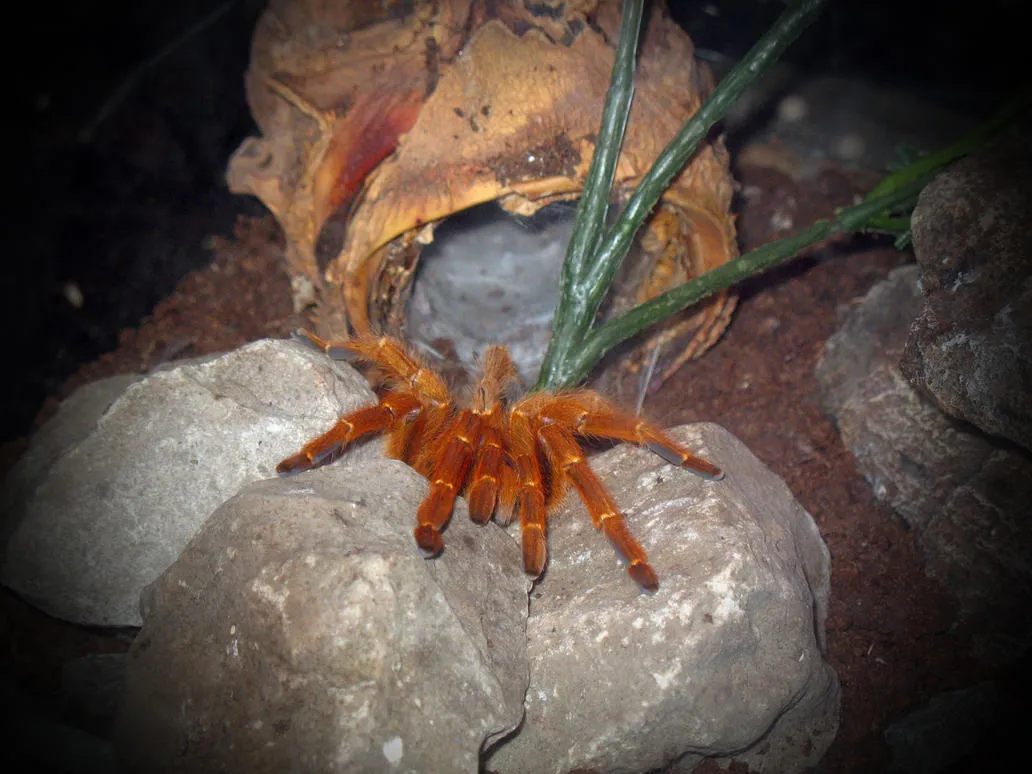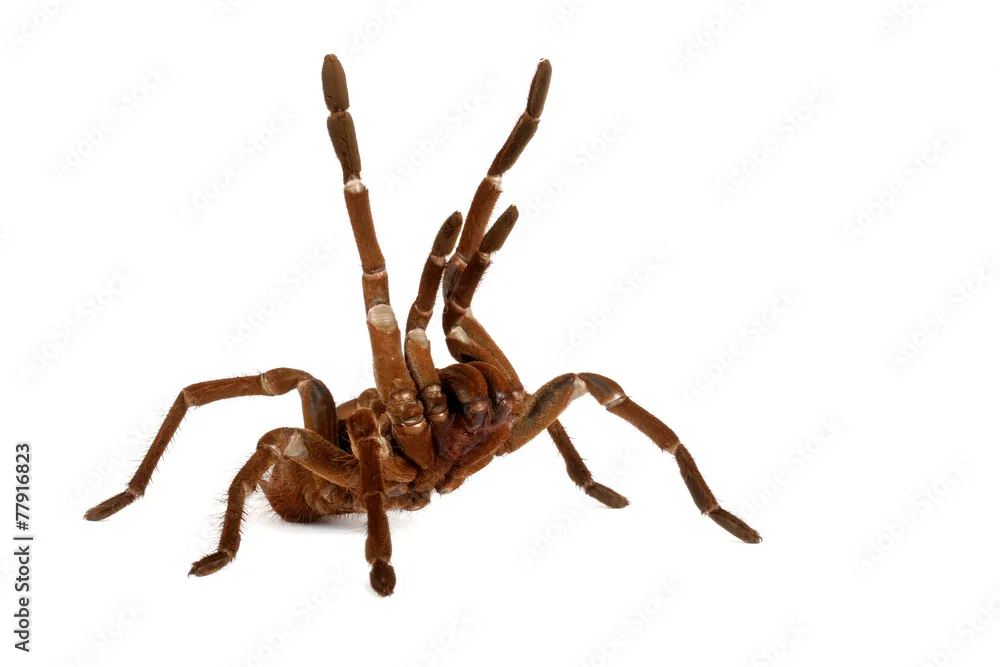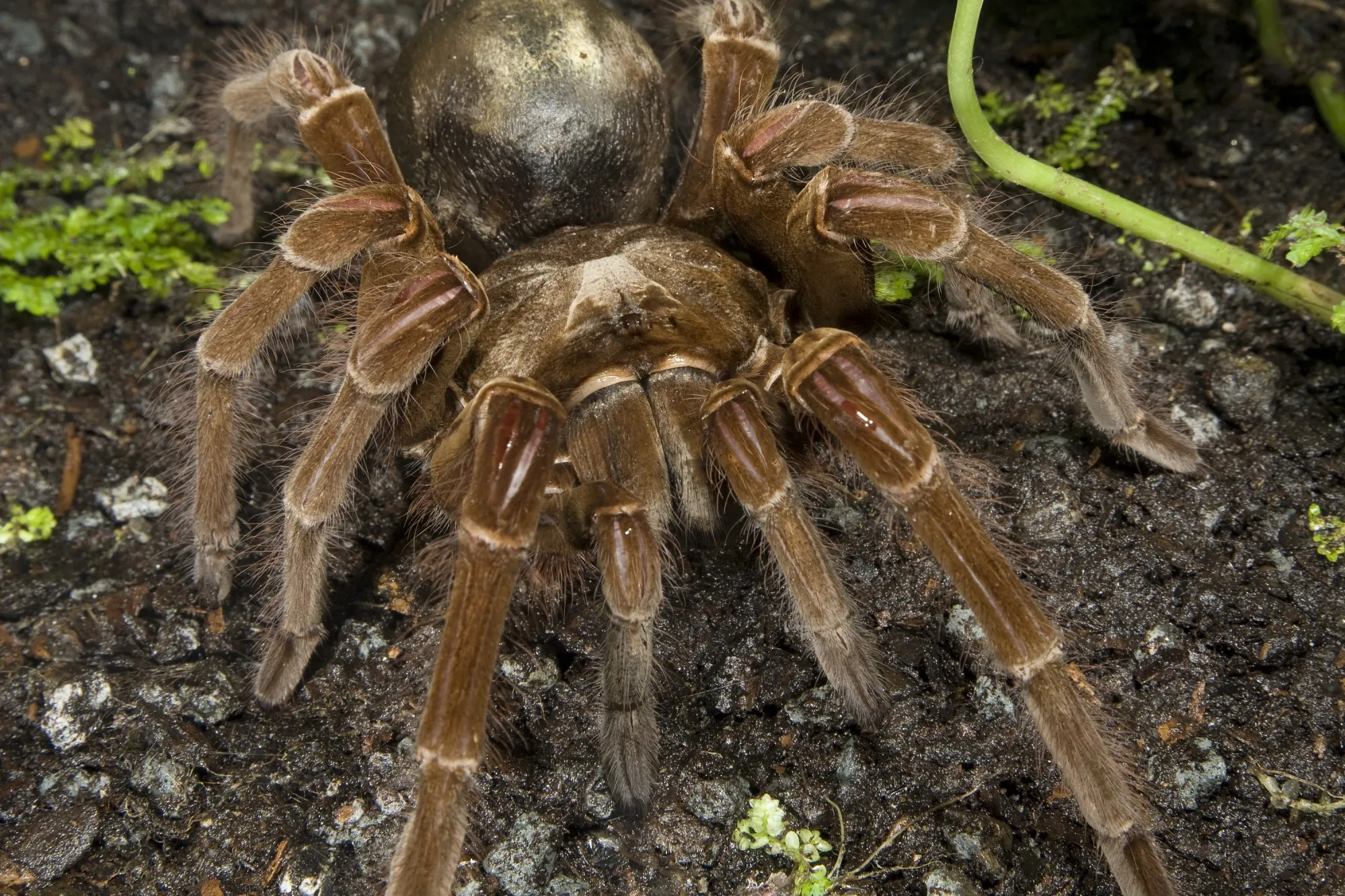What is the Goliath Bird Eating Tarantula?
The Goliath Bird Eating Tarantula (Theraphosa blondi) is one of the largest spiders in the world, known for its impressive size and, yes, its ability to make noise. Native to the rainforests of northern South America, this fascinating creature can have a leg span of up to 12 inches. Despite its name, which might conjure images of it feasting on birds, this tarantula primarily eats insects, other invertebrates, and occasionally small vertebrates. Understanding the Goliath Bird Eating Tarantula starts with recognizing its imposing presence and unique characteristics, including its ability to produce a range of sounds, a topic we will delve into further. These sounds play a crucial role in the spider’s communication and defense strategies.
Understanding the Goliath Bird Eating Tarantula’s Sounds
Goliath Bird Eating Tarantulas utilize sound as a form of communication and defense. Unlike many animals that rely on vocal cords, tarantulas produce sound through various methods involving their body parts. These noises serve several purposes, from signaling a warning to potential predators to communicating with other tarantulas during mating rituals. The sounds made by the Goliath Bird Eating Tarantula aren’t always loud but are often distinct and serve as a clear indicator of the spider’s state or intentions. The ability to recognize and understand these sounds is crucial for anyone interested in these creatures, especially those who keep them as pets or study them in the wild.
The Goliath Bird Eating Tarantula’s Stridulation

One of the primary ways the Goliath Bird Eating Tarantula makes noise is through stridulation. This process involves rubbing together parts of its body, typically the legs or palps, to create a hissing or buzzing sound. This sound is produced by rubbing the setae (bristle-like hairs) on their legs against specialized structures on their chelicerae (mouthparts). Stridulation is often used as a warning signal, a way of saying “back off” to potential threats. The intensity and frequency of the stridulation can vary, depending on the perceived danger and the tarantula’s overall mood. This defensive mechanism is an essential part of the Goliath Bird Eating Tarantula’s behavior and survival strategy. The sound is a clear indication that the tarantula feels threatened and should be given space.
The Goliath Bird Eating Tarantula’s Hissing
Another sound that the Goliath Bird Eating Tarantula produces is a hissing noise. This sound is usually made by rubbing the setae on its legs against its fangs or chelicerae. The hissing is often a more aggressive warning compared to stridulation. It is a clear indication that the tarantula is feeling threatened or is ready to attack. This is a form of defense that the spider will use to ward off predators. If you hear the hissing sound, it’s best to back away and give the tarantula space, as it is likely feeling agitated and may be preparing to strike. The sound itself can be quite startling, serving its purpose as a deterrent to potential threats. This sound can also be heard when a tarantula is molting.
The Goliath Bird Eating Tarantula’s Other Noises
Besides stridulation and hissing, Goliath Bird Eating Tarantulas can make other sounds. These may not be as common or as easily recognizable but can be important signals. For example, the tarantula may make scratching or tapping sounds on the surface of its enclosure, potentially as a way to communicate with other tarantulas or to explore its surroundings. These less frequent sounds often coincide with behaviors such as web-building or territorial marking. The variety of sounds demonstrates how the Goliath Bird Eating Tarantula uses sound beyond just defense, employing it for communication and interaction within its environment. It’s essential to observe the entire context of the tarantula’s behavior to understand these less common sounds.
Why do Goliath Bird Eating Tarantulas Make Noise?

The primary reason for a Goliath Bird Eating Tarantula to make noise is for defense. The hissing and stridulation serve as a warning mechanism to ward off potential predators, signaling that the spider is ready to defend itself. Beyond defense, the sounds might also play a role in mating rituals, with males possibly using sounds to attract females. Sound is also a way for them to communicate with each other, especially during mating season. These sounds help the tarantulas to mark territory and interact with other spiders. The production of sound is not merely a random occurrence; it is a purposeful behavior, often linked to the tarantula’s survival and reproductive strategies. The sounds the spiders produce are essential for communication.
How Loud is a Goliath Bird Eating Tarantula?
The loudness of the sounds produced by a Goliath Bird Eating Tarantula can vary. Stridulation often produces a hissing or buzzing sound that, while not deafening, can be quite noticeable, especially in a quiet environment. The hissing can be louder and more intense, serving as a more urgent warning. The actual decibel level will depend on factors like the size and age of the tarantula, its current state, and the surrounding environment. These sounds are not designed to cause harm to human ears, but they can be startling. These sounds are essential and are used to protect the spider from danger.
The Goliath Bird Eating Tarantula’s Sound in Different Situations
The sound a Goliath Bird Eating Tarantula makes can vary depending on the situation. If the tarantula feels threatened by a perceived predator, the hissing sound will be more pronounced and aggressive. During mating, the sounds might be different, with males potentially using softer stridulation to attract a female. In a more comfortable, less stressful environment, the tarantula might produce little to no sound. Understanding these situational variations provides valuable insights into the spider’s emotional state and its behavior. By paying attention to when and how the tarantula produces sound, one can better understand its needs and respond appropriately.
Protecting Yourself from Goliath Bird Eating Tarantula Noise

If you are keeping a Goliath Bird Eating Tarantula as a pet or interacting with one in its natural habitat, it’s crucial to understand how to protect yourself from its sounds and the spider itself. The sounds themselves pose no direct physical harm, but sudden noises can be startling. To avoid this, maintain a respectful distance and avoid any actions that might agitate the tarantula, such as sudden movements or loud noises. Handling the tarantula should be kept to a minimum. Always be aware of your surroundings and the tarantula’s behavior. If you need to interact with the tarantula, do so slowly and cautiously. If you hear the hissing or stridulation sounds, it’s essential to give the spider its space, which may mean backing away slowly. Proper precautions will ensure your safety while allowing you to appreciate this unique species.
